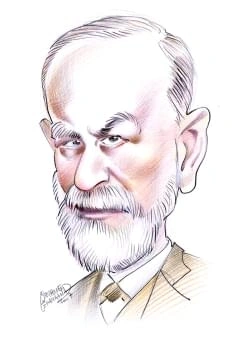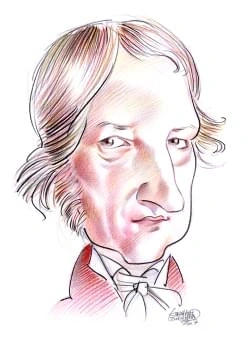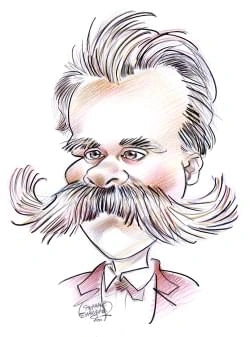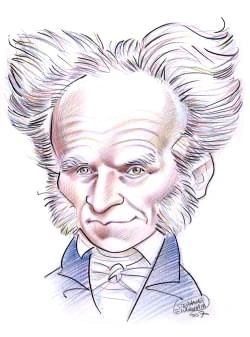365 résultats pour "northern"
-
Detroit - geography.
of German and Irish immigrants. In the first half of the 20th century, the percentage of foreign-born residents declined, even though many immigrants arrived fromeastern Europe. During World War II (1939-1945), both whites and blacks were attracted from the South to work in the city’s defense industries. In 1950 foreign-bornand black residents each made up about 16 percent of the total population. In the five decades after 1950, the city lost almost half of its population, as many white resident...
-
Azerbaijan - country.
second most important industrial center after Baku. A Ethnic Groups Azerbaijan, including the autonomous exclave of Naxçivan, is populated mostly by ethnic Azerbaijanis, who are also known as Azeris. The ethnic composition of thecountry changed due to a civil war between the government of Azerbaijan and Armenian secessionists in the Nagorno-Karabakh enclave. Beginning in 1988, when thepeople of Nagorno-Karabakh unilaterally decided to secede from Azerbaijan, nearly the entire Azerbaijani popula...
-
Geographic Exploration.
The commercial reason for exploration has been a consistent driving force. In 1492 the great navigator Christopher Columbus sailed west across the Atlantic Oceanseeking a new, shorter, and cheaper route to reach the riches of East Asia, and Portuguese explorer Vasco da Gama circumnavigated Africa for much the same reason.Yet similar investigations of the profitable eastern trade had already been made by Arab sailors. Arab trading ships were sailing from the Arabian Sea to southeasternAsia probab...
-
Geographic Exploration - explorer.
The commercial reason for exploration has been a consistent driving force. In 1492 the great navigator Christopher Columbus sailed west across the Atlantic Oceanseeking a new, shorter, and cheaper route to reach the riches of East Asia, and Portuguese explorer Vasco da Gama circumnavigated Africa for much the same reason.Yet similar investigations of the profitable eastern trade had already been made by Arab sailors. Arab trading ships were sailing from the Arabian Sea to southeasternAsia probab...
-
Arizona - geography.
of the Mogollon Rim, the Little Colorado draws very little water from a relatively large watershed, usually containing a mere trickle of water in its riverbed. The ColoradoRiver’s principal tributary is the Gila River, which flows all the way across the southern part of the state from New Mexico to the California border. From the mountainsand plateaus of central Arizona, the Gila River receives the Salt, Agua Fria, and Hassayampa rivers. The Salt River is itself fed by the Verde River. The Gila...
-
Arizona - USA History.
of the Mogollon Rim, the Little Colorado draws very little water from a relatively large watershed, usually containing a mere trickle of water in its riverbed. The ColoradoRiver’s principal tributary is the Gila River, which flows all the way across the southern part of the state from New Mexico to the California border. From the mountainsand plateaus of central Arizona, the Gila River receives the Salt, Agua Fria, and Hassayampa rivers. The Salt River is itself fed by the Verde River. The Gila...
-
Alaska - geography.
depression surrounded by highlands and have the coldest winter and hottest summer temperatures in Alaska. Once the Kuskokwim River passes through theKuskokwim Mountains, it forms the southern edge of a vast lake-studded alluvial plain bounded on the north by the Yukon River. This water-logged lowland is a majorsummer nesting area for birds. Fairbanks is the major city in this region, while Fort Yukon is the major community in the Yukon Flats and Bethel the largest settlementon the Lower Kuskokwi...
-
Alaska - USA History.
depression surrounded by highlands and have the coldest winter and hottest summer temperatures in Alaska. Once the Kuskokwim River passes through theKuskokwim Mountains, it forms the southern edge of a vast lake-studded alluvial plain bounded on the north by the Yukon River. This water-logged lowland is a majorsummer nesting area for birds. Fairbanks is the major city in this region, while Fort Yukon is the major community in the Yukon Flats and Bethel the largest settlementon the Lower Kuskokwi...
-
-
Iraq - country.
The Euphrates begins in Turkey, crosses Syria, and enters Iraq at Abū Kam āl. The flow of the Euphrates into Iraq has been greatly reduced by dams built by Turkeyand Syria. The gradient of the Euphrates above the town of H īt, in west central Iraq, is steep. In the 2,640 km (1,640 mi) from its source in Turkey to H īt, the river fallsfrom 3,000 m (10,000 ft) to a low water elevation of 50 m (170 ft) above sea level, an average drop of 1 m per km (6 ft per mi). In Iraq below H īt the fall is very...
-
Spanish Empire.
Spain’s royal government quickly imposed its own officials, first to collect taxes and then to administer the colony. Its goal was to assert royal control over both settlersand indigenous peoples. In Spain the government established a House of Trade to supervise colonial affairs and to oversee, license, and tax all trade and commerce. Asthe royal government asserted more authority over colonial activities, Columbus lost effective power, and was eventually replaced by other colonial governors. Wi...
-
Spanish Empire .
Spain’s royal government quickly imposed its own officials, first to collect taxes and then to administer the colony. Its goal was to assert royal control over both settlersand indigenous peoples. In Spain the government established a House of Trade to supervise colonial affairs and to oversee, license, and tax all trade and commerce. Asthe royal government asserted more authority over colonial activities, Columbus lost effective power, and was eventually replaced by other colonial governors. Wi...
-
Estonia - country.
protest the expansion of open-pit phosphorite mining in northeastern Estonia. Their success in stopping the expansion prompted further demonstrations as part of thecountry’s independence movement. Since independence Estonia has taken measures to protect the environment. The government has ratified international agreementsto reduce emissions of hazardous wastes and greenhouse gases, as well as to protect biodiversity, wetlands, and endangered species. Estonians cherish thecountryside, and 31 perc...
-
West Virginia - geography.
Forests, mostly of hardwood varieties, cover 79 percent of West Virginia. The principal commercial species are the oak, yellow poplar, maple, birch, beech, black walnut,hickory, and gum. Softwoods include pines and hemlock firs. Flowering trees include the wild crab apple, dogwood, hawthorn, and redbud. Among the many floweringbushes and plants are the rhododendron, which is the state flower, the laurel, blueberry, hepatica, wild geranium, and black-eyed Susan. Insects and disease, mostly introd...
-
West Virginia - USA History.
Forests, mostly of hardwood varieties, cover 79 percent of West Virginia. The principal commercial species are the oak, yellow poplar, maple, birch, beech, black walnut,hickory, and gum. Softwoods include pines and hemlock firs. Flowering trees include the wild crab apple, dogwood, hawthorn, and redbud. Among the many floweringbushes and plants are the rhododendron, which is the state flower, the laurel, blueberry, hepatica, wild geranium, and black-eyed Susan. Insects and disease, mostly introd...
-
Ship.
I
INTRODUCTION
Ship, vessel that is buoyant in the water and used
B1 Biremes Experience soon proved that longer ships posed a new set of problems: They were weaker structurally, more difficult to maneuver, and presented a larger target to anyenemy ship with a ram. In the 8th century BC Mediterranean shipbuilders eliminated these problems with the bireme , a war galley built to accommodate two levels, or banks , of oarsmen. Oarsmen on the lower level rowed oars from ports cut into the side of the vessel, while those above rowed from the deck. This arrangemen...
-
Montana - geography.
(191 sq mi), is Montana’s largest lake, and the largest natural freshwater lake in the contiguous states west of the Mississippi River. C Climate Climatic regions in Montana coincide roughly with the two major physiographic regions. In western Montana, as compared with the eastern plains area, winters tend tobe milder while summers are cooler. Precipitation is more evenly distributed throughout the year in the west, and it is cloudier and somewhat more humid in all seasons.In addition, the grow...
-
-
Montana - USA History.
(191 sq mi), is Montana’s largest lake, and the largest natural freshwater lake in the contiguous states west of the Mississippi River. C Climate Climatic regions in Montana coincide roughly with the two major physiographic regions. In western Montana, as compared with the eastern plains area, winters tend tobe milder while summers are cooler. Precipitation is more evenly distributed throughout the year in the west, and it is cloudier and somewhat more humid in all seasons.In addition, the grow...
-
Turkey - country.
has a general elevation of 900 to 1,500 m (3,000 to 5,000 ft) above sea level. The eastern highlands region is the most mountainous and rugged portion of Turkey; Mount Ararat (Ağrı Da ğı) is the highest peak in the country at 5,165 m (16,945ft). Many Christians and Jews believe it to be the same Mount Ararat mentioned in the Bible as the place where Noah’s ark came to rest. The eastern highlands are thesource for both the Tigris (Dicle) and Euphrates (Fir āt)—two of southwestern Asia’s principal...
-
Tennessee (state) - geography.
The climate of Tennessee is characterized by hot summers, mild winters, and abundant rainfall. C1 Temperature Average July temperatures range from less than 21° C (70° F) in the Blue Ridge region to 27° C (80° F) at Nashville and Memphis. Maximum daytime temperatures insummer often rise above 35° C (95° F) in central and western Tennessee. Daytime temperatures in the mountains rarely rise above 32° C (90° F). Summer nights tendto be warm and muggy in central and western Tennessee, but temperatu...
-
Tennessee (state) - USA History.
The climate of Tennessee is characterized by hot summers, mild winters, and abundant rainfall. C1 Temperature Average July temperatures range from less than 21° C (70° F) in the Blue Ridge region to 27° C (80° F) at Nashville and Memphis. Maximum daytime temperatures insummer often rise above 35° C (95° F) in central and western Tennessee. Daytime temperatures in the mountains rarely rise above 32° C (90° F). Summer nights tendto be warm and muggy in central and western Tennessee, but temperatu...
-
Vietnam - country.
E Natural Resources Vietnam’s most valuable natural resource is its land, particularly the fertile, alluvial soils in the Red and Mekong deltas. Some 29 percent of the land is currently beingcultivated. Vietnam has some valuable mineral resources, including gold, iron, tin, zinc, phosphate, chromite, apatite, and anthracite coal. Most deposits are located in the northernpart of the country. Few attempts were made to extract these minerals until the French takeover of Vietnam at the end of the 1...
-
Greece - country.
minerals, such as chromium, copper, uranium, and magnesium, are relatively small. Greece’s small petroleum deposits, located under the Aegean Sea near the island ofThásos, are rapidly being depleted. There are no significant reserves of natural gas. Greece’s forests, probably abundant in ancient times, have been significantly depleted. Subsequent soil erosion has made reforestation efforts difficult. Although muchof Greece’s soil is rocky and dry, the country’s mountains are interspersed with sm...
-
Middle East - Geography.
though overall they have improved considerably since the 1970s. This variation reflects the different levels of wealth and development in countries of the Middle East. Inthe highly developed country of Israel the infant mortality rate was 8 deaths per 1000 live births in 1997. By comparison, the rate per 1000 live births was 71 in less-developed Egypt and 75 in Yemen. A Ethnic Groups and Languages Arabs make up the majority of the people of the Middle East, accounting for almost the entire popu...
-
Native American Architecture.
B Relationship to the Universe and Nature A more profound difference between European American and Native American perceptions lay in how human beings saw themselves in relationship to the universe andin what they believed their responsibilities were to the natural world and to each other. Most European Americans saw themselves as separate from creation andadversaries of nature, ever struggling to conquer and subdue nature and force it to yield to their will. Native Americans saw themselves as...
-
-
Silk Road - History.
and high in value because they were carried on the backs of the limited number of camels in each caravan. Thus, of necessity they were luxury items, not bulky rawmaterials or essential goods for daily use. The oases and towns along the route, which were located in or near remote areas, profited from the Silk Road trade and reliedon it for their existence. The great empires of Persia, China, and Rome, however, could easily have survived without the commerce in luxury goods. V SPREAD OF RELIGION A...
-
South Africa - country.
The major soil zones are conditioned largely by climatic factors. In the semiarid north and west, soils are alkaline and poorly developed. In the southern part of WesternCape Province, rain falls mostly in the winter months, and soils there form slowly and are generally thin and immature. The moderate temperatures and summer rainfallof the High Veld and eastern coastal areas create conditions for more productive organic decomposition, leading to dark, fertile soils, or chernozems, similar to tho...
-
Lebanon (country) - country.
during the civil war. Within the country, thousands of Shia Muslim refugees fled fighting in southern Lebanon in the 1990s and moved into shantytowns in Beirut’ssouthern suburbs. Lebanon’s major cities were greatly affected by the civil war. Beirut has gradually regained most of its prewar population and remains the country’s largest city. Tripoli,the northern port, is the second largest city. Jūniyah, north of Beirut, was developed as a wartime port and subsequently had a population boom. Za ḩl...
-
Albania - country.
Joining the international community in its concern over the degradation of the environment, Albania is party to international agreements concerning biodiversity, climatechange, and wetlands. III THE PEOPLE OF ALBANIA In 2008 Albania’s population estimate was 3,619,778, resulting in an average density of 132 persons per sq km (342 per sq mi). More and more people have left ruralareas for urban ones, particularly in the northern districts, such that in 2005 some 45 percent of the population live...
-
Utah - geography.
Temperatures decrease from the south to the north in the state. In the mountains the average temperature drops about 0.5°C (about 1°F) for every about 300 m(about 1,000 ft) rise in elevation. Average July temperatures range from less than 16°C (60°F) in the mountains to more than 27°C (80°F) in a few locations insouthern Utah. At Salt Lake City average July temperatures range from a low of 18°C (64°F) to a high of 33°C (92°F). There is a great variation between daytime andnighttime temperatures,...
-
Utah - USA History.
Temperatures decrease from the south to the north in the state. In the mountains the average temperature drops about 0.5°C (about 1°F) for every about 300 m(about 1,000 ft) rise in elevation. Average July temperatures range from less than 16°C (60°F) in the mountains to more than 27°C (80°F) in a few locations insouthern Utah. At Salt Lake City average July temperatures range from a low of 18°C (64°F) to a high of 33°C (92°F). There is a great variation between daytime andnighttime temperatures,...
-
Astronomy - astronomy.
Telescopes may use either lenses or mirrors to gather visible light, permitting direct observation or photographic recording of distant objects. Those that use lenses arecalled refracting telescopes, since they use the property of refraction, or bending, of light ( see Optics: Reflection and Refraction ). The largest refracting telescope is the 40-in (1-m) telescope at the Yerkes Observatory in Williams Bay, Wisconsin, founded in the late 19th century. Lenses bend different colors of light by d...
-
Human Evolution.
Strepsirhines are the most primitive types of living primates. The last common ancestors of strepsirhines and other mammals—creatures similar to tree shrews andclassified as Plesiadapiformes—evolved at least 65 million years ago. The earliest primates evolved by about 55 million years ago, and fossil species similar to lemursevolved during the Eocene Epoch (about 55 million to 38 million years ago). Strepsirhines share all of the basic characteristics of primates, although their brains are notpa...
-
-
Human Evolution - biology.
classified as Plesiadapiformes—evolved at least 65 million years ago. The earliest primates evolved by about 55 million years ago, and fossil species similar to lemursevolved during the Eocene Epoch (about 55 million to 38 million years ago). Strepsirhines share all of the basic characteristics of primates, although their brains are notparticularly large or complex and they have a more elaborate and sensitive olfactory system (sense of smell) than do other primates. B Haplorhines B1 Tarsiers T...
-
Bosnia and Herzegovina - country.
Serb military campaigns in 1992 and 1993 and Croat campaigns in 1993 and 1995 were aimed at expelling others from areas claimed by these groups. By the end ofthe war almost all non-Serbs had been expelled from Serb-claimed lands in eastern and northern Bosnia, and non-Croats from Croat-claimed lands in southwesternBosnia. In turn, most non-Muslims had left land under Muslim control in northwestern Bosnia. The largest cities had mixed populations in 1991, but the war and its aftermath made them a...
-
Arkansas - geography.
temperature rises to the upper 30°s C (lower 100°s F). C2 Precipitation Arkansas receives about 1,000 to 1,300 mm (about 40 to 50 in) of precipitation a year, and some areas receive even more. Most of the rain comes during winter andspring and at times is so heavy as to cause flooding. Snow is rare in the south but amounts to more than 250 mm (10 in) a year in the mountains. C3 Growing Season Arkansas has a long growing season. It averages 211 days for the state as a whole and ranges from 241...
-
Arkansas - USA History.
temperature rises to the upper 30°s C (lower 100°s F). C2 Precipitation Arkansas receives about 1,000 to 1,300 mm (about 40 to 50 in) of precipitation a year, and some areas receive even more. Most of the rain comes during winter andspring and at times is so heavy as to cause flooding. Snow is rare in the south but amounts to more than 250 mm (10 in) a year in the mountains. C3 Growing Season Arkansas has a long growing season. It averages 211 days for the state as a whole and ranges from 241...
-
Gothic Art and Architecture
I
INTRODUCTION
Notre Dame Cathedral, Paris
Notre Dame Cathedral, in Paris, was begun in 1163 and completed for the most part in 1250.
and by external arches, called flying buttresses. Consequently, the thick walls of Romanesque architecture could be largely replaced by thinner walls with glass windows,and the interiors could reach unprecedented heights. A revolution in building techniques thus occurred. With the Gothic vault, a ground plan could take on a variety of shapes. The general plan of the cathedrals, however, consisting of a long three-aisled nave interceptedby a transept and followed by a shorter choir and sanctuary,...
-
Belgium - country.
European Union (EU) directives aimed at improving Belgium’s environmental conditions concern water treatment and water quality, both significant issues in such anindustrial center. Before these directives were issued, the Meuse River, a major source of drinking water, had become polluted from steel production wastes. Otherrivers were polluted with animal wastes and fertilizers. However, Belgium failed to meet EU targets set for the early 2000s for protecting its rivers from farm pollutionand for...
-
Newfoundland and Labrador - Geography.
Precipitation averages about 1,120 mm (about 44 in) yearly in Newfoundland. In Labrador precipitation varies from about 1,020 mm (about 40 in) in the southeast toabout 510 mm (about 20 in) in the extreme north. Heavy winter snowfalls are common, especially in Newfoundland. D Plant Life About one-third of Newfoundland is forested, and most of the rest of the island is made up of barren areas of reindeer moss and lichens. The forests consist almostentirely of conifers. The most important species...
-
Newfoundland and Labrador - Canadian History.
Precipitation averages about 1,120 mm (about 44 in) yearly in Newfoundland. In Labrador precipitation varies from about 1,020 mm (about 40 in) in the southeast toabout 510 mm (about 20 in) in the extreme north. Heavy winter snowfalls are common, especially in Newfoundland. D Plant Life About one-third of Newfoundland is forested, and most of the rest of the island is made up of barren areas of reindeer moss and lichens. The forests consist almostentirely of conifers. The most important species...
-
-
Charlemagne
I
INTRODUCTION
Charlemagne (742?
border province). These officials were key to administering the empire. They were kings in miniature, with all of the administrative, judicial, and military authority of theemperor within their respective districts. Each political district had its parallel in a church district, or diocese, headed by a bishop, with similar authority in all mattersrelated to the church. Both counts and bishops were vassals of the emperor, and were overseen by representatives of Charlemagne known as missi dominici...
-
Charlemagne.
border province). These officials were key to administering the empire. They were kings in miniature, with all of the administrative, judicial, and military authority of theemperor within their respective districts. Each political district had its parallel in a church district, or diocese, headed by a bishop, with similar authority in all mattersrelated to the church. Both counts and bishops were vassals of the emperor, and were overseen by representatives of Charlemagne known as missi dominici...
-
Charlemagne .
border province). These officials were key to administering the empire. They were kings in miniature, with all of the administrative, judicial, and military authority of theemperor within their respective districts. Each political district had its parallel in a church district, or diocese, headed by a bishop, with similar authority in all mattersrelated to the church. Both counts and bishops were vassals of the emperor, and were overseen by representatives of Charlemagne known as missi dominici...
-
Himalayas - geography.
result of deforestation the habitat of most of the wildlife has been destroyed. They are now restricted to special protected areas such as the Jaldapara and Kazirangasanctuaries in India ( see Kaziranga National Park) and the Chitawan preserve in Nepal. There are few animals in the Middle Himalayas because of extensive deforestation. In the Great Himalayas musk deer, wild goats, sheep, wolves, and snow leopards are found. The existence of the Abominable Snowman or Yeti has beenreported by highla...
-
Assyria - USA History.
villages and cities were ransacked and razed, but no attempt was made to annex their territories. In the course of time this pattern of conquest changed, and the Assyrian rulers began to make Assyria the center of a new empire by incorporating the conquered landsinto their domain, although probably not according to a conscious plan. Toward the end of the 10th century BC, for example, Adad-nirari II annexed the Aramaean state centering on Nisibis, east of the Habur River. His son, Tukulti-Ninurt...
-
Reconstruction (U.
Instead, Congress began a lengthy debate over Reconstruction policy. The program eventually enacted resulted from a series of compromises among Republicanfactions; the Radicals were never powerful enough to gain everything they sought. Still, fueled by anger at the president's refusal to compromise and at the appearanceof former Confederates returning to power throughout the South, members of Congress moved increasingly toward the Radicals. The key Reconstruction measuresenacted aimed to produce...
-
Abolitionist Movement.
The American Revolution (1775-1783) and the French Revolution (1789-1799), widely seen as revolutions by citizens against oppressive rulers, transformed thisEnlightenment assertion into a call for universal liberty and freedom. The successful slave revolt that began in the French colony of Saint-Domingue in 1791 was part of this revolutionary age. Led by François Dominique ToussaintLouverture, black rebels overthrew the colonial government, ended slavery in the colony, and in 1804 established th...
-
Abolitionist Movement - U.
The American Revolution (1775-1783) and the French Revolution (1789-1799), widely seen as revolutions by citizens against oppressive rulers, transformed thisEnlightenment assertion into a call for universal liberty and freedom. The successful slave revolt that began in the French colony of Saint-Domingue in 1791 was part of this revolutionary age. Led by François Dominique ToussaintLouverture, black rebels overthrew the colonial government, ended slavery in the colony, and in 1804 established th...
-
-
London (England) - geography.
In the northern part of the West End is Bloomsbury, the city’s traditional intellectual center, with its concentration of bookshops and homes of writers and academics. Inthe early 20th century a number of famous writers, critics, and artists who lived here became known as the Bloomsbury Group. Here, too, is the British Museum, one ofLondon’s chief tourist attractions. Nearby is the giant complex of the University of London, whose various colleges and departments have taken over much ofBloomsbury...
-
World War II .
the Nazi-Soviet Pact was signed. In the part published the next day, Germany and the Soviet Union agreed not to go to war against each other. A secret protocol gaveStalin a free hand in Finland, Estonia, Latvia, eastern Poland, and eastern Romania. See also German-Soviet Nonaggression Pact. III MILITARY OPERATIONS In the early morning hours of September 1, 1939, the German armies marched into Poland. On September 3 the British and French surprised Hitler by declaring war onGermany, but they...
}})








